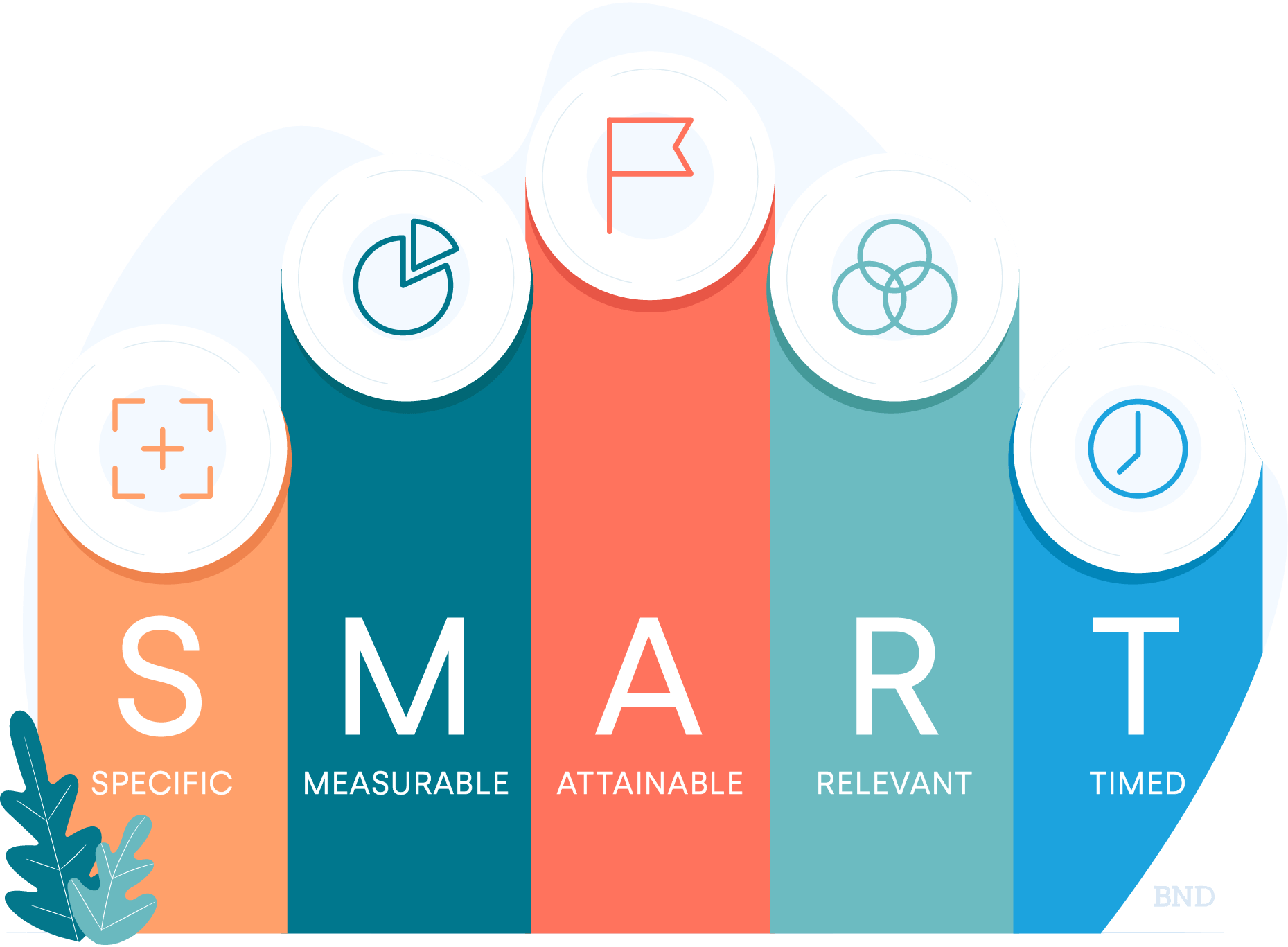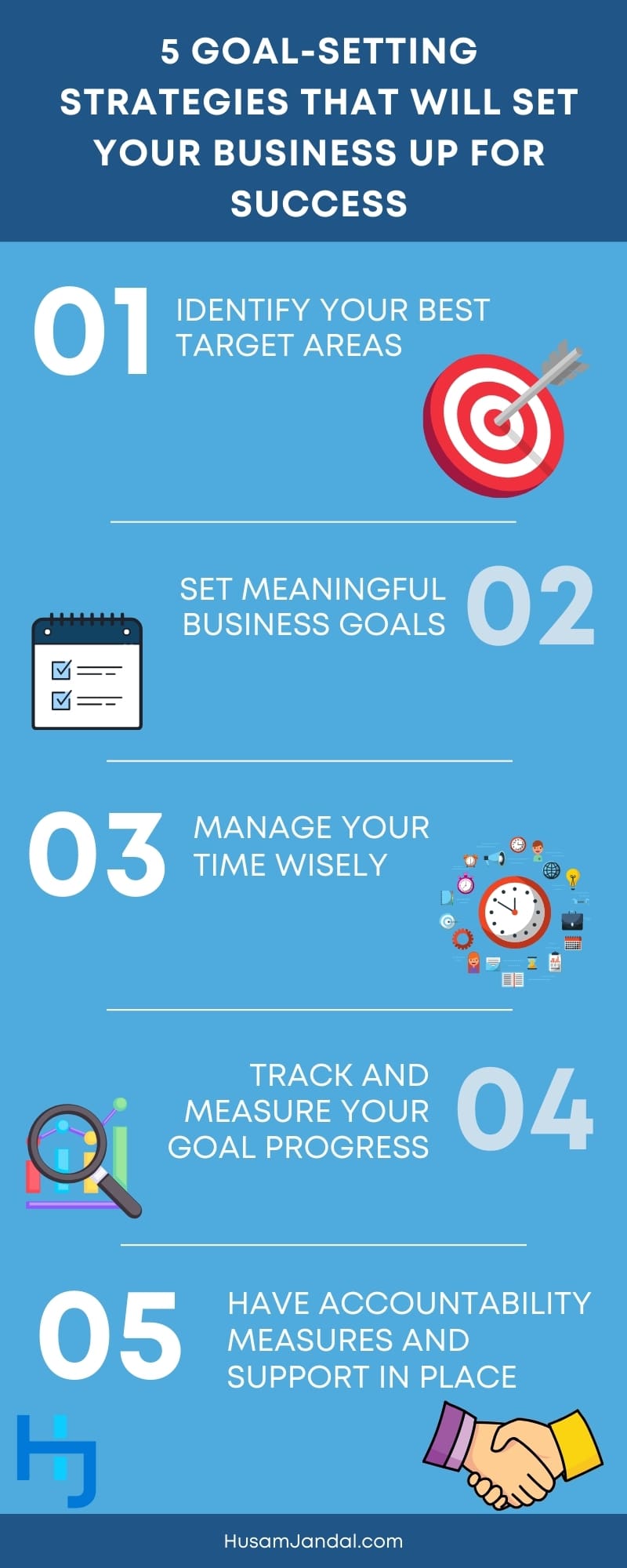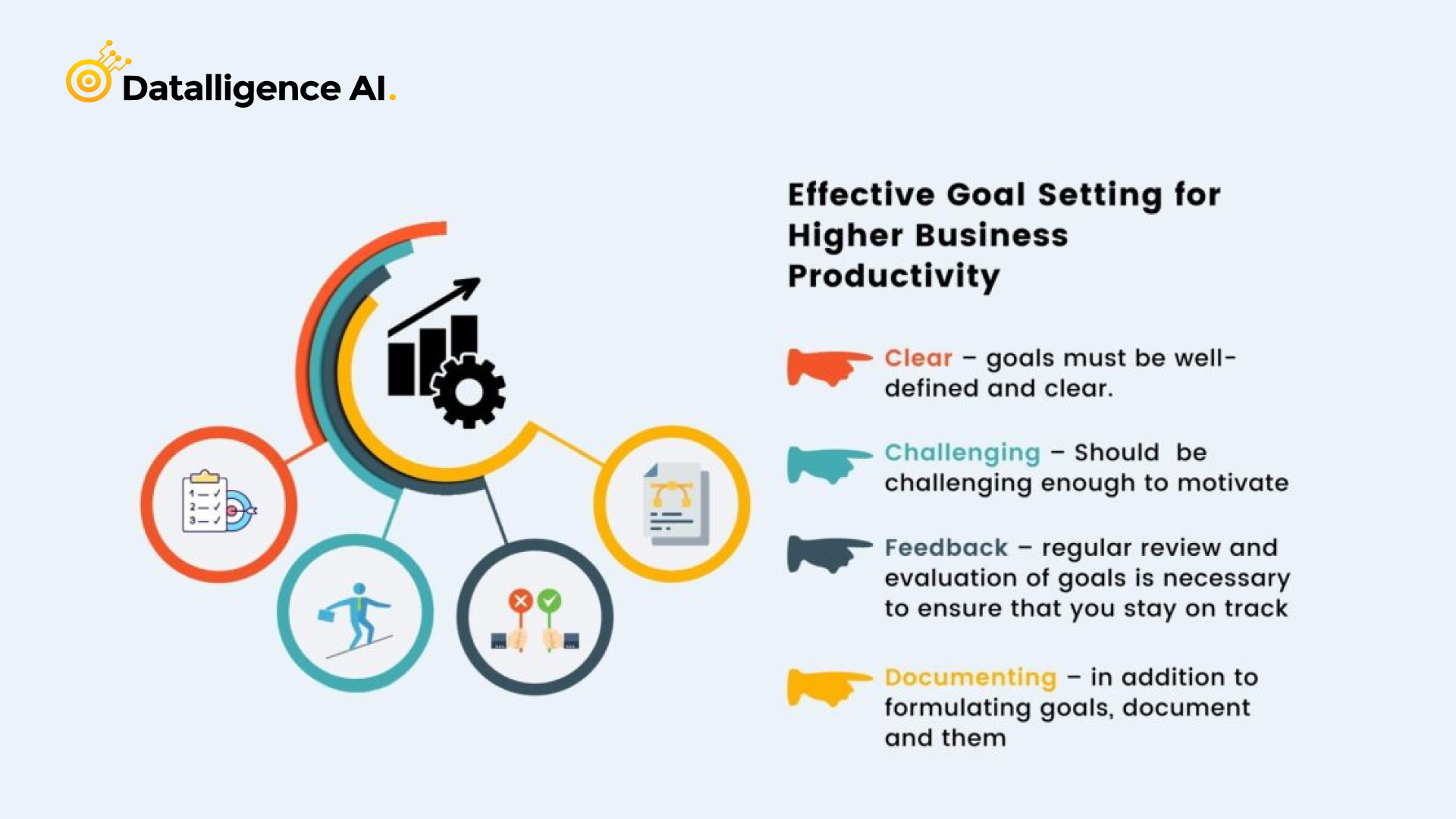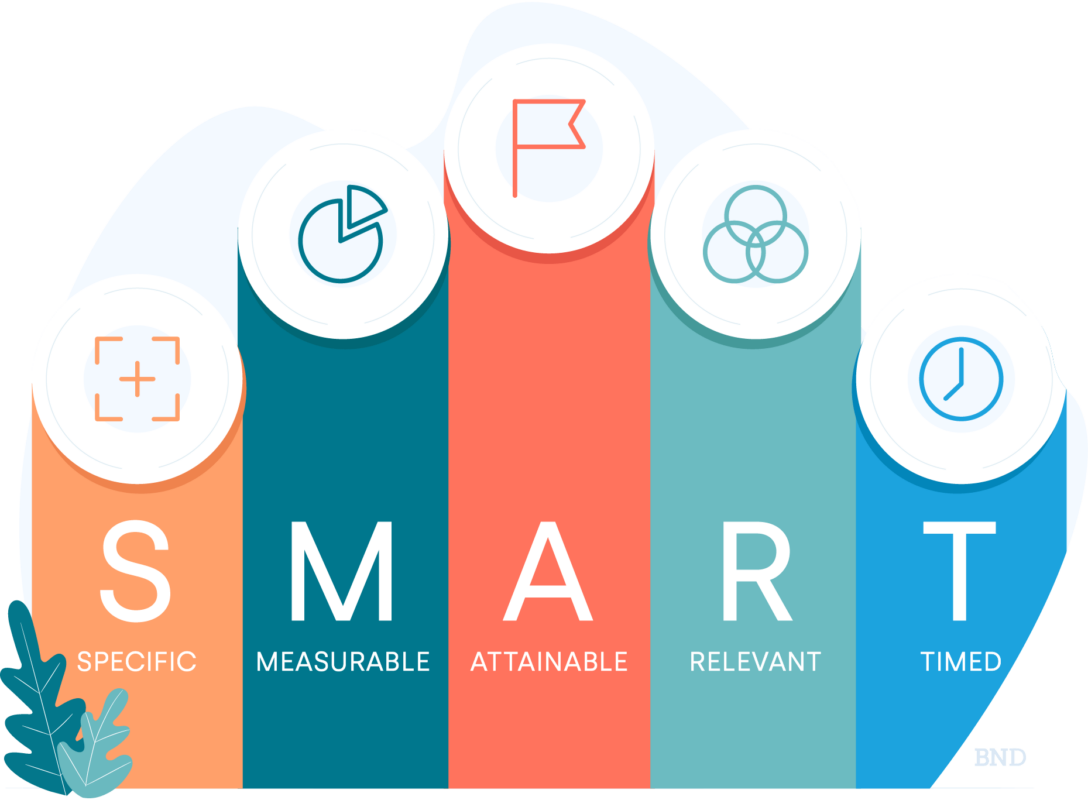Business Goal Setting: A Comprehensive Guide to Achieve Success
Setting clear and effective business goals is essential for any organization aiming for long-term success. Whether you are a startup or an established enterprise, understanding the intricacies of business goal setting can significantly influence your trajectory. In this article, we will delve into the importance of business goals, explore the types of goals you can set, and outline the steps you should take to achieve them.

Understanding Business Goals
What are Business Goals?
Business goals are specific objectives that organizations aim to achieve over a defined timeframe. They provide a roadmap for businesses, guiding decision-making and helping to allocate resources effectively. Setting goals also serves to motivate employees, creating a shared vision that encourages collaboration and accountability.
Types of Business Goals
Understanding the different types of business goals can help you craft a more comprehensive strategy. Here are the main categories:
- Strategic Goals: Long-term goals that define the overall direction of the company. For example, a strategic goal might involve expanding into a new market or launching a new product line.
- Operational Goals: Short-term objectives that focus on day-to-day operations. These may include improving customer service response times or increasing production efficiency.
- Financial Goals: Objectives that relate to financial performance, such as increasing revenue by 20% or reducing operational costs by 15%.
- Growth Goals: Aimed at scaling the business, these might include goals like increasing your customer base or expanding your geographical reach.
Short-term vs. Long-term Goals
It’s important to distinguish between short-term and long-term goals. Short-term goals usually span a few months to a year, while long-term goals often extend beyond a year.
- Short-term goals provide immediate targets that help maintain momentum. For instance, launching a marketing campaign within the next quarter can help increase brand awareness.
-
Long-term goals, on the other hand, require patience and sustained effort. For example, achieving a 10% market share in your industry within five years is a long-term ambition.
SMART Goals Framework
One of the most effective methods for setting business goals is the SMART criteria. SMART stands for:
- Specific: Clearly define what you want to achieve.
- Measurable: Ensure that your goal can be tracked with concrete metrics.
- Achievable: Set realistic goals that can be accomplished within the given timeframe.
- Relevant: Align your goals with your overall business objectives.
- Time-bound: Establish a clear deadline for achieving your goal.

Using the SMART framework can help eliminate ambiguity and improve the likelihood of success. For example, instead of stating, I want to increase sales, a SMART goal would be, Increase sales by 15% in the next quarter through targeted online marketing campaigns.
The Importance of Goal Setting in Business
Setting effective business goals is crucial for several reasons:
Aligning Team Efforts
When everyone understands the goals, they can align their efforts toward achieving them. This leads to a more focused and motivated workforce. According to a study by Harvard Business Review, companies that share their goals are 95% more likely to achieve them.
Measuring Success and Progress
Well-defined goals provide a benchmark against which you can measure your progress. By regularly reviewing these metrics, you can identify whats working and what needs adjustment. For example, if your goal is to enhance customer satisfaction, tracking Net Promoter Scores (NPS) can help gauge success.
Steps to Effective Business Goal Setting
Creating effective business goals isnt just about writing them down; its about a structured approach to ensure they are achievable and aligned with your business strategy.
Step 1: Define Your Vision
Before setting specific goals, clarify your organizations mission and vision. Understanding your broader purpose will inform the type of goals you set. A clear vision helps ensure that your goals contribute to the overall direction of the company.
Step 2: Conduct a SWOT Analysis
Perform a SWOT analysis (Strengths, Weaknesses, Opportunities, Threats) to understand your business’s internal and external environments. This analysis can reveal areas where you can set goals that leverage your strengths while addressing weaknesses.
Step 3: Set Specific and Measurable Goals
Based on your vision and SWOT analysis, create specific goals that are measurable. Ensure that you follow the SMART criteria discussed earlier.
Step 4: Create an Action Plan
Once your goals are set, outline an action plan detailing the steps required to achieve them. This plan should include:
- Tasks: List all necessary tasks to reach the goal.
- Responsibilities: Assign team members to each task to ensure accountability.
- Deadlines: Set specific deadlines to maintain urgency.
Step 5: Monitor Progress and Adjust Goals
Regularly monitor your progress toward your goals. This involves tracking relevant metrics and holding review meetings to discuss successes and obstacles. Be flexible and willing to adjust your goals as necessary to adapt to changing circumstances or new insights.
Quote: “Setting goals is the first step in turning the invisible into the visible.” Tony Robbins
By following these steps, you can establish a solid framework for effective business goal setting that aligns with your organizations mission and objectives.
Stay tuned for the second half of the article, where we will explore common challenges in business goal setting, useful tools, and successful case studies!
Common Challenges in Business Goal Setting
While setting goals is crucial, many organizations encounter challenges during the process. Being aware of these common pitfalls can help you navigate them effectively.
1. Lack of Clarity
One of the biggest issues in goal setting is ambiguity. Goals that are not clearly defined can lead to confusion among team members. To avoid this, always apply the SMART criteria and ensure everyone understands the goals.
2. Unrealistic Goals
Setting overly ambitious goals can lead to frustration and decreased morale. It’s essential to strike a balance between aspiration and attainability. Ensure your goals are challenging yet realistic, taking into account available resources and market conditions.
3. Inadequate Monitoring
Without proper monitoring and evaluation, its challenging to assess progress toward goals. Regular check-ins can help keep your team aligned and make necessary adjustments. Implementing key performance indicators (KPIs) will allow you to measure success effectively.
4. Resistance to Change
Employees may resist new goals, especially if they involve significant changes to processes or routines. To mitigate this resistance, communicate the reasons behind the goals clearly and involve your team in the goal-setting process.
5. Not Aligning Goals with Organizational Strategy
Goals that are not aligned with the organization’s overall strategy can lead to wasted resources and missed opportunities. Always ensure that individual and departmental goals contribute to the broader business objectives.

Tips for Successful Business Goal Setting
To overcome challenges and enhance the effectiveness of your business goals, consider these strategies:
1. Involve Your Team
Encourage team participation in the goal-setting process. This inclusion fosters buy-in and makes employees feel valued. A sense of ownership can significantly enhance commitment to achieving the goals.
2. Break Down Goals
Large goals can seem overwhelming. Break them down into smaller, manageable tasks. This approach not only makes the goal more attainable but also provides opportunities for regular wins that can motivate your team.
3. Celebrate Milestones
Acknowledge and celebrate progress along the way. Recognizing milestones fosters a positive work environment and motivates employees to keep pushing toward the end goal.
4. Use Technology
Utilize goal-setting tools and project management software to streamline the process. Tools like Asana, Trello, or Monday.com can help track progress, assign tasks, and facilitate communication among team members.
5. Review and Revise Regularly
Set aside time for regular reviews of your goals. This will allow you to assess whats working, what isnt, and make necessary adjustments. Flexibility in goal setting is crucial in a constantly changing business landscape.
FAQs About Business Goal Setting
What are the benefits of setting business goals?
Setting business goals provides direction, helps measure progress, and aligns team efforts toward common objectives. Goals also enhance accountability and motivation among employees.
How often should I review my business goals?
Reviewing business goals quarterly is often a best practice. However, more frequent reviews can be beneficial, especially if your industry is fast-paced or if the goals are time-sensitive.
Can I change my business goals mid-year?
Yes! Business conditions change, and so should your goals. Be flexible and willing to adapt your goals based on new information or changing market conditions.
What is the difference between short-term and long-term goals?
Short-term goals focus on immediate objectives, typically achievable within a year. Long-term goals are broader and aimed at achieving significant outcomes over several years.
Conclusion
Effective business goal setting is an ongoing process that requires clarity, commitment, and flexibility. By understanding the importance of goals, employing the SMART framework, and avoiding common pitfalls, you can position your organization for sustained success. Remember that goals are not just a destination; they are a journey that helps shape your business’s future.
For more resources on improving your goal-setting strategies, check out our comprehensive guide on business planning or explore tools that can streamline your processes.

By implementing these practices, you can foster an environment of success and innovation, guiding your team toward achieving their full potential.

